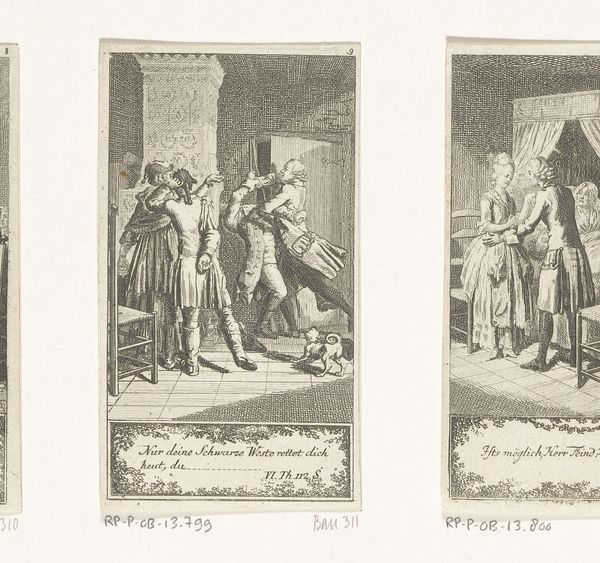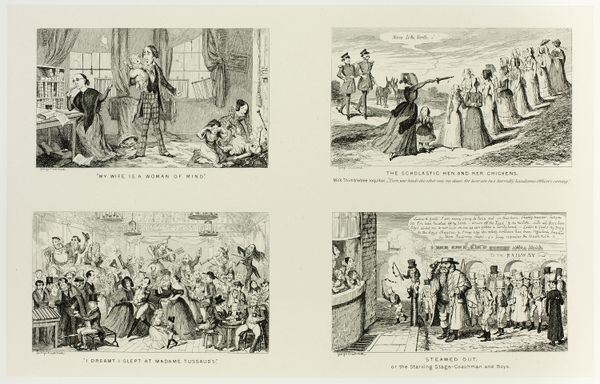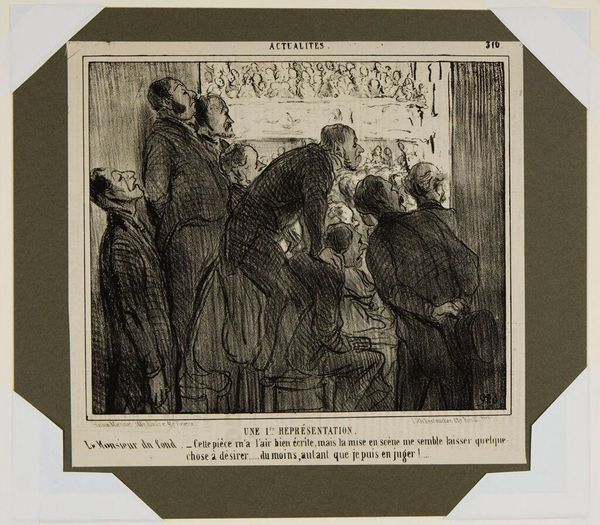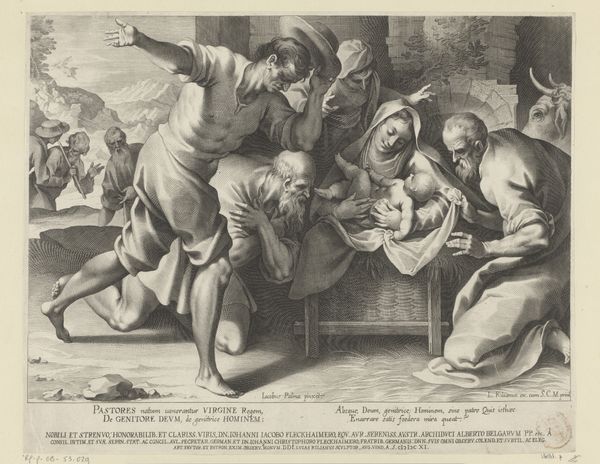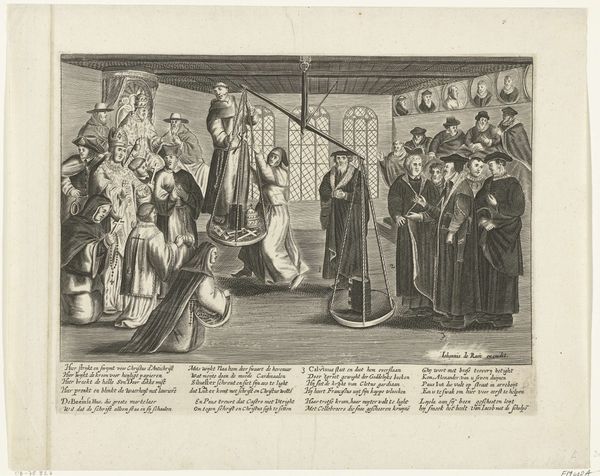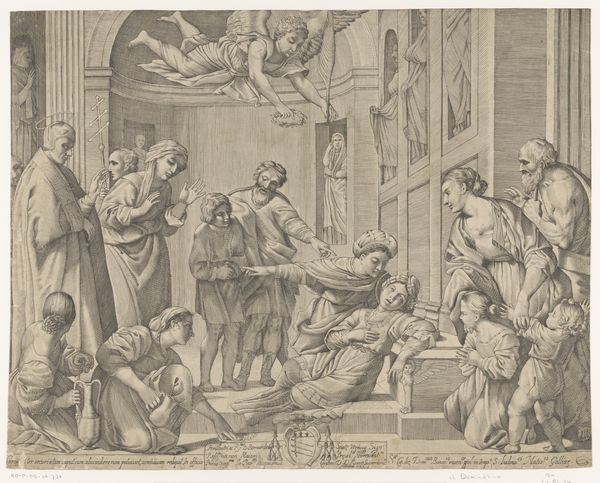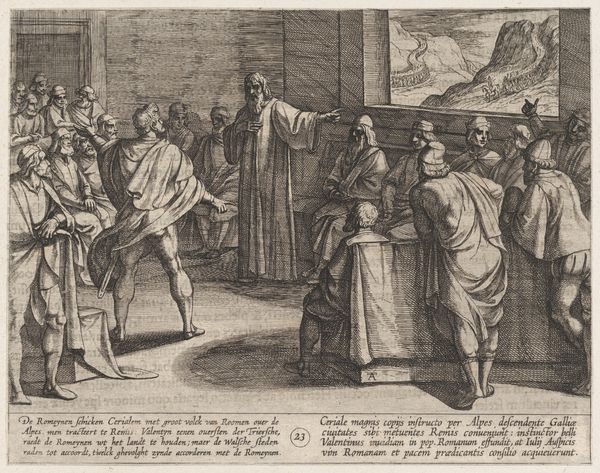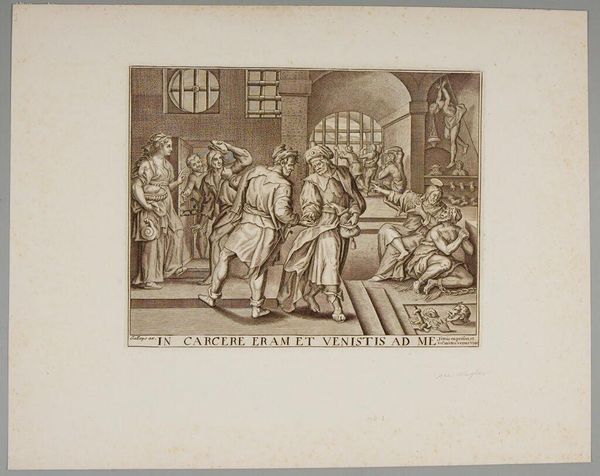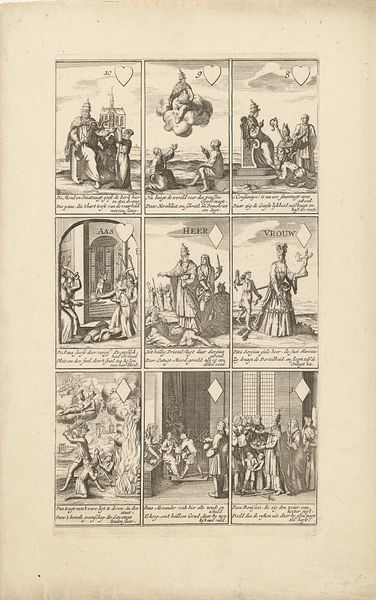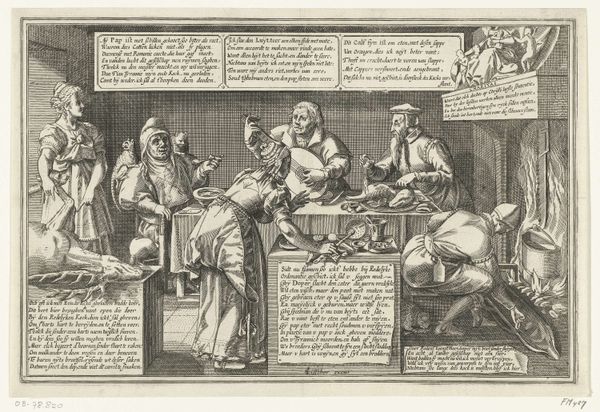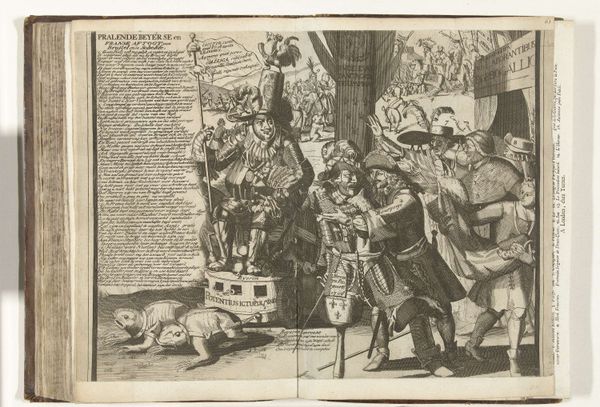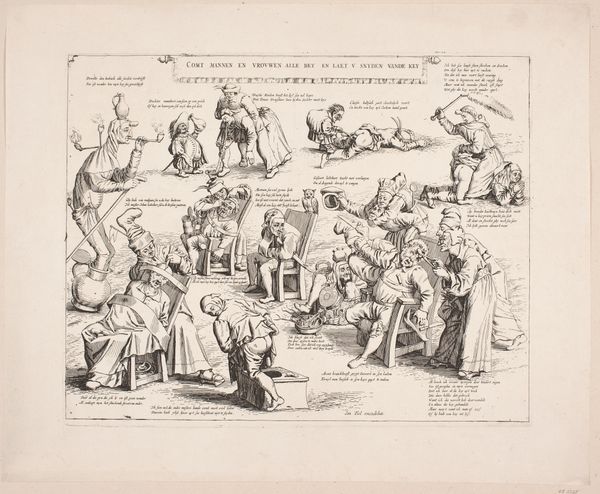
Dimensions: height 224 mm, width 318 mm
Copyright: Rijks Museum: Open Domain
Curator: This is Oskar Friedrich Schmidt’s print, “Death with a Scale,” created between 1848 and 1849. It’s an engraving. What are your first impressions? Editor: Stark, theatrical almost. The use of light and shadow, particularly on the figures, gives it an almost Expressionist intensity, though the movement is decades away. Curator: The symbolism is quite loaded, isn’t it? We have a skeletal figure, representing Death, holding a scale—an age-old symbol of justice and judgment. The crowd is an interesting mix. There's a soldier, a hooded figure, a distressed mother… Editor: The crowd is a cross-section of society. Their reactions, their gestures, that is where so much of the symbolic work happens. The figure of Death presides over them with scale, presumably measuring their worth or perhaps the weight of their sins, but I would guess there are contemporary German cultural symbols at play, also. Curator: Exactly. It makes me think about the revolutions of 1848, which is when this piece was made. “Freedom, Equality, Brotherhood,” a sign that is posted behind, only twisted with Death at the helm of society. Editor: Note also the broken Star of David right beside it, also perhaps reflecting some other cultural anxieties, maybe with an underlying commentary on equality and freedom, but certainly, with these weighted elements that feel like injustices about to happen. The symbolism feels very potent and critical, particularly about power. I wonder, what’s in the pans? Are they recognizable objects? Curator: The one is empty, and the other seems to contain something ornate—maybe a crown or other symbols of earthly power and status, weighed in the scale. Editor: So, is it as simple as earthly vanities versus nothingness? Is that where we come down on this, that the power of death cancels out vanities and material excesses? I notice the language also—what might the poem tell us about how this symbolism was seen, then? Curator: The verse below actually reinforces the socio-political critique, with mentions of the republic and the illusion of freedom amidst social strife. Even the gestures become motifs of societal critique. Editor: Fascinating! All of the formal and symbolic devices Schmidt employs truly work together to create a visually arresting and thought-provoking statement about society and power. Curator: Indeed. Its starkness makes it particularly powerful. A compelling reminder of how artists can use symbols and allegories to respond to and reflect on turbulent times.
Comments
No comments
Be the first to comment and join the conversation on the ultimate creative platform.
